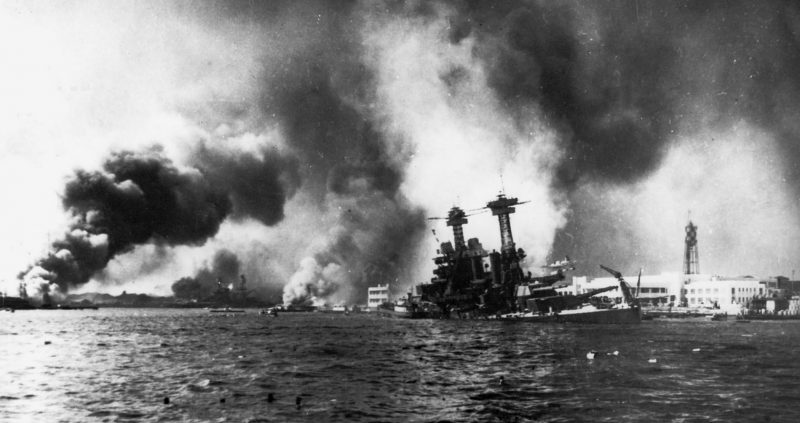Mike Ferraro, Sr., is a World War II veteran who became a music teacher in both the Mohawk and New Castle school districts. He spoke at American Legion Post 343’s Christmas dinner.
The dinner was open to all World War II veterans. It focused on the 75th anniversary of Pearl Harbor.
The event started with Kate Smith singing the Star Spangled Banner into which flowed reports and bulletins featuring the attack on Pearl Harbour. This was followed by a recording of Roosevelt’s address to Congress and the country.
That’s what led the country into war, but Ferraro believes that decisions made almost a decade earlier prepared the US to win that war.
Ferraro began his talk by detailing the events during the Great Depression, in 1931.
He recalled not being able to buy clothes and having to wear clothes that didn’t fit. He remembered trying to patch his shoes to keep wearing them. He could remember not having money for food.
Eventually, Roosevelt created work programs like the Works Progress Administration and the Civilian Conservation Corps. These programs got people working and earning money. They then spent their money on goods; factories had to produce more, and they, in turn, had to hire more people. By the end of 1933, the economy was recovering. Ferraro himself was making $20 a week playing music at clubs.
When the attack on Pearl Harbor occurred, the US was faced with another big challenge.
They knew about Germany’s invasions in Europe, but that was over there, it didn’t affect the US. Suddenly, with Pearl Harbor, things changed. The next day, President Roosevelt asked Congress to declare war and life changed for all Americans.
In 1942, homes put up blackout curtains in case of air raids and students practiced what to do in the event of an air raid.
The young people growing up in the Depression were the soldiers going off to fight in World War II. After his high school graduation, Ferraro enlisted in the Navy. He eventually became a medic attached to the Marines and spent two years in the South Pacific. At one point, he spent 21 days drifting in a raft when his ship was sunk by a torpedo.
After serving for two years, Ferraro was discharged and sent home, New Castle News reported.
As a veteran of the Depression and of WWII, he sees a link between the two eras.
“The sacrifices that everyone made, from the Depression to war, with a couple of years in between when things weren’t too shabby,” he said, “that generation of people deserve a lot of credit.”
